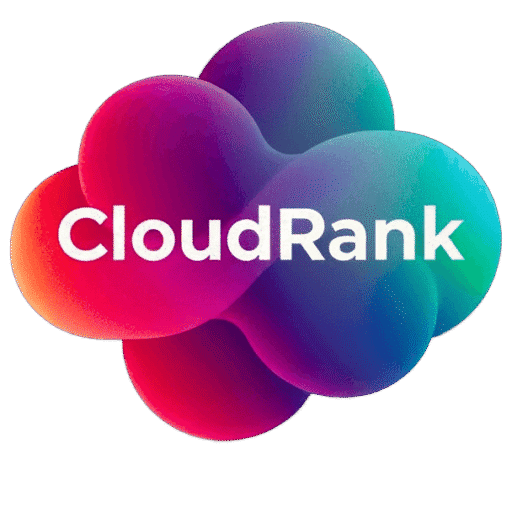Cloud governance is a framework that ensures the efficient and secure use of cloud resources. It encompasses a set of rules, policies, and processes that govern how cloud services are deployed, managed, and secured. Regulatory compliance in the public cloud, on the other hand, refers to adhering to legal standards and frameworks that protect data privacy and security.
The Importance of Cloud Governance
Cloud governance is fundamental in ensuring that organisations can maximise the benefits of cloud computing whilst minimising risks. It provides a structured approach to managing cloud operations, ensuring that resources are used efficiently, costs are controlled, and compliance requirements are met.
This structured approach includes establishing clear policies and guidelines for resource allocation and usage, which helps prevent overspending and ensures optimal resource utilisation. Additionally, cloud governance involves continuous monitoring and auditing to ensure that all cloud activities align with organisational policies and compliance mandates.
Moreover, effective cloud governance fosters a culture of accountability and responsibility across the organisation. By clearly defining roles and responsibilities, organisations can ensure that every team member understands their part in maintaining compliance and security. This clarity not only enhances operational efficiency but also strengthens the organisation’s overall security posture. Governance frameworks also include mechanisms for incident response and remediation, ensuring that any security breaches or compliance violations are swiftly addressed to mitigate potential damage.
Key Regulations: GDPR and HIPAA
Two of the most crucial regulations affecting cloud deployments are the General Data Protection Regulation (GDPR) and the Health Insurance Portability and Accountability Act (HIPAA). Understanding these regulations is vital for any organisation using the public cloud. These regulations set stringent standards for data protection and privacy, necessitating organisations to adopt robust security measures to ensure compliance. Organisations must also be aware of the penalties associated with non-compliance, as violations can result in hefty fines and damage to reputation.
Furthermore, both GDPR and HIPAA require organisations to implement comprehensive data protection strategies. These strategies involve data encryption, secure data storage, and regular audits to ensure ongoing compliance. Organisations must also establish clear policies for data access and sharing, ensuring that only authorised personnel can access sensitive information.
Compliance with these regulations not only protects organisations from legal consequences but also builds trust with customers and partners.
GDPR: Protecting Personal Data
The GDPR is a comprehensive data protection law enacted by the European Union. It mandates strict data protection and privacy requirements for all companies handling EU citizens’ data, regardless of the company’s location. The regulation emphasises data subjects’ rights and imposes hefty fines for non-compliance. Key components of GDPR include the requirement for explicit consent from data subjects for data processing, the right to access personal data, and the right to data erasure. Organisations must also implement data protection measures by design and default, ensuring that data privacy is integrated into all business processes.
Additionally, GDPR requires organisations to appoint a Data Protection Officer (DPO) if they process large volumes of personal data or engage in data processing that poses significant risks to data subjects’ rights. The DPO is responsible for overseeing data protection strategies and ensuring compliance with GDPR requirements. Organisations must also conduct regular Data Protection Impact Assessments (DPIAs) to identify and mitigate risks associated with data processing activities. By adhering to these requirements, organisations can not only achieve compliance but also enhance their data protection practices.
HIPAA: Safeguarding Health Information
HIPAA is a U.S. law designed to protect patients’ medical records and other health information. It sets standards for the protection of electronic health information and requires healthcare providers and their business associates to ensure the confidentiality, integrity, and security of patient data.
Key provisions of HIPAA include the Privacy Rule, which establishes standards for the protection of individually identifiable health information, and the Security Rule, which sets standards for the protection of electronic health information.
Healthcare organisations must implement a range of security measures to comply with HIPAA, including access controls, encryption, and audit controls. Access controls ensure that only authorised personnel can access patient data, whilst encryption protects data from unauthorised access during transmission and storage. Audit controls provide organisations with the ability to monitor and review access to patient data, ensuring accountability and transparency. By implementing these measures, healthcare organisations can safeguard patient data and maintain compliance with HIPAA requirements.
Challenges in Achieving Compliance in the Public Cloud
Navigating regulatory compliance in the public cloud presents unique challenges. These challenges often stem from the cloud’s inherent characteristics, such as its shared responsibility model, dynamic nature, and worldwide reach.
The Shared Responsibility Model
In the public cloud, the responsibility for security and compliance is shared between the cloud provider and the customer. cloud providers are typically responsible for the security of the cloud infrastructure, whilst customers are responsible for securing their data and applications within the cloud. This shared responsibility model requires organisations to clearly understand their roles and obligations in maintaining compliance. Organisations must also establish clear communication channels with their cloud providers to ensure that compliance requirements are met.
Additionally, organisations must implement robust security measures to protect their data and applications within the cloud. This includes implementing access controls, encryption, and regular security assessments to identify and mitigate vulnerabilities. Organisations must also ensure that their cloud providers comply with relevant regulations and standards, as any lapses in provider compliance can impact the organisation’s overall compliance status. By understanding and effectively managing the shared responsibility model, organisations can ensure that their cloud deployments remain secure and compliant.
Data Residency and Sovereignty
Cloud deployments often span multiple geographic locations, raising concerns about data residency and sovereignty. Organisations must ensure that their cloud providers comply with local laws and regulations regarding data storage and processing.
This necessitates organisations to carefully evaluate their cloud providers’ data residency policies and ensure that data is stored and processed in compliance with applicable laws. Organisations must also establish clear data governance policies to manage data residency and sovereignty requirements.
In addition, organisations must consider the potential impact of data residency and sovereignty on their compliance efforts. This includes assessing the legal and regulatory implications of storing and processing data in different jurisdictions. Organisations must also implement measures to ensure that data transfers across borders comply with relevant regulations, such as GDPR’s data transfer requirements. By addressing data residency and sovereignty challenges, organisations can ensure that their cloud deployments remain compliant with applicable laws and regulations.
Dynamic and Complex Environments
The dynamic and complex nature of cloud environments can complicate compliance efforts.
Continuous monitoring and management are required to ensure that compliance is maintained as cloud services and configurations change. Organisations must implement automated monitoring and management tools to provide real-time visibility into their cloud environments. These tools can help organisations identify and address compliance issues before they become significant problems.
Furthermore, organisations must establish comprehensive change management processes to manage changes to cloud services and configurations. This includes conducting regular compliance audits and reviews to ensure that changes do not impact compliance status. Organisations must also establish clear procedures for managing incidents and breaches, ensuring that they can respond swiftly and effectively to any compliance violations. By effectively managing dynamic and complex cloud environments, organisations can maintain compliance and mitigate risks.
Best Practices for Navigating Regulatory Compliance
To navigate the complexities of regulatory compliance in the public cloud, organisations should adopt best practices that align with their specific needs and regulatory requirements.
Conduct Regular Risk Assessments
Regular risk assessments are critical in identifying potential compliance gaps and vulnerabilities. Organisations should evaluate their cloud environments regularly to ensure that they comply with applicable regulations. This involves conducting comprehensive risk assessments that consider the organisation’s specific compliance requirements and risk profile. Organisations must also establish clear processes for managing and mitigating identified risks.
Moreover, organisations should involve key stakeholders in the risk assessment process to ensure that all relevant perspectives are considered.
This includes involving compliance, security, and business teams in the assessment process to ensure that compliance efforts align with organisational goals and priorities. By conducting regular risk assessments, organisations can identify and address compliance gaps before they become significant issues.
Implement Strong Access Controls
Access controls are a fundamental aspect of cloud security. Organisations should implement strong authentication and authorisation mechanisms to ensure that only authorised users have access to sensitive data and systems. This includes implementing multi-factor authentication (MFA) to provide an additional layer of security for user access. Organisations must also establish clear access control policies to manage user access rights and permissions.
Additionally, organisations should regularly review and update access controls to ensure that they remain effective.
This includes conducting regular access reviews to identify and remove unnecessary access rights and permissions. Organisations must also implement monitoring and auditing tools to track access to sensitive data and systems, ensuring accountability and transparency. By implementing strong access controls, organisations can protect sensitive data and maintain compliance with applicable regulations.
Encrypt Data at Rest and in Transit
Data encryption is essential for protecting sensitive information from unauthorised access. Organisations should encrypt data both at rest and in transit to mitigate the risk of data breaches. This involves implementing encryption technologies that align with industry standards and best practices. Organisations must also establish clear encryption policies to manage encryption keys and processes.
Moreover, organisations should regularly review and update their encryption practices to ensure that they remain effective.
This includes conducting regular encryption audits to identify and tackle potential vulnerabilities. Organisations must also ensure that their cloud providers implement robust encryption measures to protect data stored and processed in the cloud. By encrypting data at rest and in transit, organisations can protect sensitive information and maintain compliance with applicable regulations.
Utilise Automation and Monitoring Tools
Automation and monitoring tools can aid organisations in maintaining compliance by providing continuous visibility into cloud environments. These tools can automate compliance checks, alerting organisations to potential issues before they transform into significant problems. Organisations ought to implement automated monitoring and management tools to offer real-time visibility into their cloud environments. This includes implementing tools that can monitor and enforce compliance policies and controls.
In addition, organisations should establish clear procedures for responding to compliance alerts and incidents. This includes conducting regular compliance audits and reviews to ensure that compliance efforts remain effective. Organisations must also involve key stakeholders in the compliance monitoring and management process to ensure that all relevant perspectives are considered. By leveraging automation and monitoring tools, organisations can maintain compliance and mitigate risks.
Real-World Examples of Compliance in Action
Real-world examples can provide valuable insights into how organisations successfully navigate regulatory compliance in the public cloud.
Case Study: A Healthcare Provider’s Journey to HIPAA Compliance
A healthcare provider migrated its electronic health records to a public cloud platform.
To achieve HIPAA compliance, the provider implemented a comprehensive cloud governance framework, conducted regular security audits, and leveraged encryption and access controls to protect patient data. The provider also established clear policies for data access and sharing, ensuring that only authorised personnel could access patient data. Additionally, the provider conducted regular compliance training for staff to ensure that they understood their roles and responsibilities in maintaining compliance.
Moreover, the provider implemented automated monitoring and management tools to provide real-time visibility into its cloud environment. These tools helped the provider identify and address compliance issues before they became significant problems. By adopting a comprehensive approach to HIPAA compliance, the provider was able to successfully migrate its electronic health records to the cloud whilst maintaining compliance with applicable regulations.
Case Study: A Global Retailer’s GDPR Compliance Strategy
A global retailer with operations in multiple countries faced the challenge of ensuring GDPR compliance across its cloud environments. The retailer adopted a centralised compliance management approach, using automation tools to monitor data processing activities and ensure compliance with GDPR requirements. The retailer also established clear data governance policies to manage data access and sharing, ensuring that only authorised personnel could access sensitive information.
Furthermore, the retailer conducted regular Data Protection Impact Assessments (DPIAs) to identify and mitigate risks associated with data processing activities. The retailer also established a Data Protection Officer (DPO) to oversee data protection strategies and ensure compliance with GDPR requirements.
By adopting a comprehensive approach to GDPR compliance, the retailer was able to successfully manage its cloud environments whilst maintaining compliance with applicable regulations.
Conclusion
In conclusion, regulatory compliance in the public cloud is a complex yet essential endeavour for organisations across industries. By understanding the key regulations, addressing the unique challenges of the cloud environment, and adopting best practices, organisations can successfully navigate the compliance landscape. Embracing cloud governance and leveraging technology can help organisations achieve compliance and unlock the full potential of the public cloud, ensuring that their data remains secure and their operations remain compliant.
As cloud technologies continue to evolve, staying informed and proactive about regulatory compliance will be key to maintaining trust and achieving long-term success in the digital world.
Organisations must remain vigilant in their compliance efforts, continuously evaluating and updating their strategies to address emerging challenges and opportunities. By prioritising regulatory compliance, organisations can build trust with customers and partners, protect their data and systems, and achieve long-term success in the digital age.




